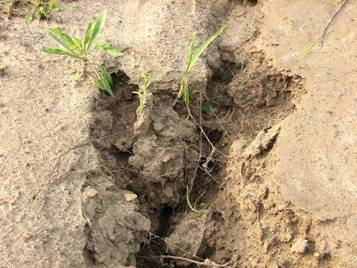Natural factors
Improving the quantity and quality of land resources
 Increases in the quantity of land available for agriculture will
increase economic growth. However, the extent to which this happens is
limited by the extent to which bush land can be converted to
agricultural land (this process may have negative effects on soil
erosion and quality, and contribute to deforestation globally). All
economic resources are scarce and have an opportunity cost. As bush
land is increasingly used for agricultural purposes, it is no longer a
habitat for wildlife.
Increases in the quantity of land available for agriculture will
increase economic growth. However, the extent to which this happens is
limited by the extent to which bush land can be converted to
agricultural land (this process may have negative effects on soil
erosion and quality, and contribute to deforestation globally). All
economic resources are scarce and have an opportunity cost. As bush
land is increasingly used for agricultural purposes, it is no longer a
habitat for wildlife.
The relative scarcity of land in the face of a growing population means that the law of diminishing returns might also become relevant. This law predicts that, if an increasing amount of labour is applied to a fixed quantity of land, the marginal productivity of the labour will fall. This was the basis of the argument put forward by the Reverend Thomas Malthus. To prevent this loss in productivity, the quality of the land must be improved. This can be done through the application of better technology through improved irrigation, fertilisers and pest control.

Pause for thought
The concept of opportunity cost is an important one in economics. Production inevitably involves making sacrifices. Consider the ethical issues involved in the arguments about whether land should be used for agriculture and food production for humans or for wildlife habitats.